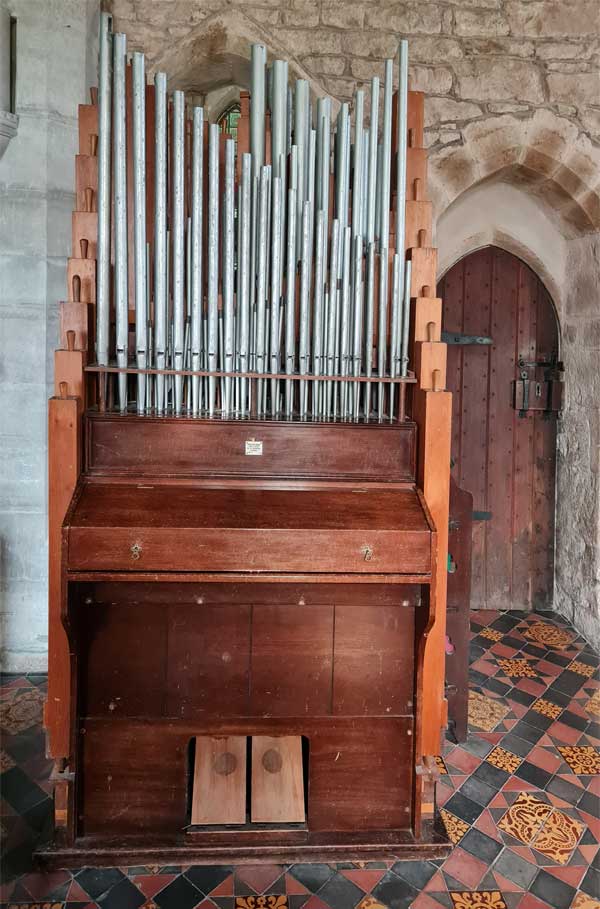 |
The Single-Manual Positive Organ (Casson's patent) W R Andrew, London op.8To the right the door to the Vestry.
The over hundred year history, of The Positive Organ Company.
Generically and historically, a 'positive' organ (from the Latin verb ponere, "to place") is a small self-contained pipe organ that is built to be more or less mobile. Positive organs were common in sacred and secular music particularly in the 17-18th centuries, with Handel writing his famous organ concertos for such instruments. These organs were often found in chapels, private houses and small churches, or used as a chamber organ and for the 'basso continuo' in ensemble works. Positive organs are not to be confused with the portable and much smaller 'chamber' or 'box' organs which are much more restricted in facilities and power.
The Positive Organ Company was actually started in 1882 by Thomas Casson. Born in Liverpool in 1842 he followed in his father's footsteps as a banker retiring early to Denbigh in North Wales to follow the lure of his consuming passion for organ design. This initially led him to commission other organ builders to produce instruments to his plans.
In 1892 Thomas Casson decided to make a business out of his hobby and in doing so founded a number of companies such as "Casson & Co"; "Casson's Patent Organ Co". Unfortunately he fell out with one of the organ builders producing his organs and his fledgling Welsh venture failed. Undeterred, Casson designed his own trademark "Casson Positive Organ" in 1896 founding "The Positive Organ Company" in 1898 removing to London in 1900 just after designing his largest organ for the Church of the Sacred Heart, Omagh, Co Tyrone (1899; three manuals, 31 stops). In 1900 a four manual organ was built for the London Organ School & College of Music. The instrument was removed to the Shaftesbury Cinema in Portsmouth in 1921.
His innovative ideas influenced the most significant organ builders of the next generation: Arthur Harrison, Henry Willis III and John Compton. The company started building small pipe organs from a factory in London. Right from the start, Casson was an innovator obtaining many patents for various kinds of organ action: pneumatic assistance, melody couplers, a 'melodic bass' system which allowed a pianist to duplicate the lowest note played on a 16 ft. Bourdon stop, thereby achieving the effect of the Pedal Organ in accompaniment of hymns and anthems. He also developed a very early form of electric action in 1889. Thomas Casson died near Brentford in September 1910 at the age of 68 years.
©peh


